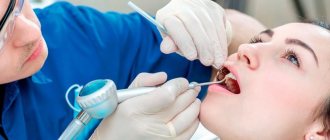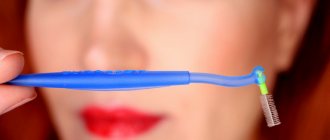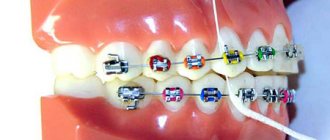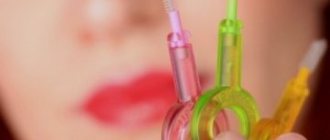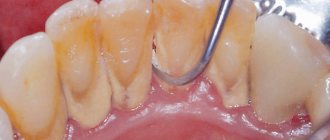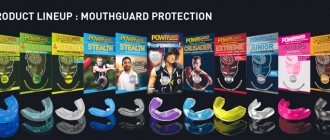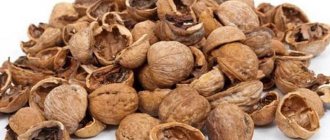Daily oral hygiene is a routine process, brought to the point of “automation”. Often we brush our teeth without thinking about the rules, the position of the brush and the direction of movement. Meanwhile, not only the aesthetic appeal of a smile, but also its health depends on how well oral hygiene is performed. Many dental problems can be avoided (prevented or eliminated) only by following the basic rules of effective teeth brushing.
Why do we brush our teeth?
Millions of microorganisms multiply in the mouth, the vital activity of which is usually completely invisible.
The immune system prevents bacteria from entering the body and causing harm to health. Meanwhile, leftover food stuck between the teeth begins to rot if not removed. Plaque appears, which releases acid and destroys the enamel. Poor cleaning leads to the development of diseases such as caries, periodontitis, gum inflammation, stone formation, halitosis (bad breath), stomatitis, gastritis, and ulcers. An increase in the number of pathogens in the mouth leads to weakened immunity and frequent infectious diseases.
Teeth cleaning methods
There are different methods of cleaning teeth. The standard method for brushing teeth is:
- Apply a small amount of paste to a clean brush;
- clean the upper jaw from the outside from the gums to the edge, starting from the farthest ones;
- clean your teeth from the inside with sweeping movements;
- clean the lower jaw in the same way;
- clean your tongue from root to tip (we recommend reading: how and how to properly clean your tongue from plaque at home?);
- clean the interdental space with floss;
- rinse your mouth with mouthwash.
The standard method is the best for brushing your teeth.
You can clean your teeth in any condition using the standard method. Other methods of teeth cleaning used in dentistry:
- The Leonardo method allows you to clean the oral cavity without damaging the gums. Moving the brush from the gum to the edge, clean the enamel from plaque. Hold the brush perpendicularly. With the jaws closed, clean the outer surfaces, and with the jaws open, clean the inner surfaces.
- Using the Bass method, the cervical area of the teeth is thoroughly cleaned. The brush should be positioned at an angle of 45 degrees to the surface. Clean with vibrating movements.
- The Fones method differs in that cleansing occurs with circular movements of the brush. It is not recommended to use this technique if you have gum disease.
How often should you do professional dental hygiene?
The recommended interval between professional teeth cleanings in the clinic is six months. However, this period may vary. For example, if you have braces, you may need to visit your hygienist more frequently because plaque builds up faster. At the same time, ultrasonic cleaning in people with orthodontic structures is only possible in the gum area: the braces area is usually treated using Air flow. The frequency of professional hygiene is also influenced by the individual characteristics of the structure of the dental system, as well as the quality of home hygiene. For gum diseases, cleaning dental plaque is one of the first stages of treatment, but this procedure cannot be carried out too often, especially during periods of exacerbation of gingivitis and periodontitis.
Improper brushing of teeth
Let's admit it, we brush our teeth automatically. And we often do it wrong: we clean them with movements left and right, sherk-sherk. With this method of cleaning, soft plaque is transferred from the surface of the teeth to the interdental spaces and becomes clogged there. As a result, there is a danger of gum damage and the appearance of a wedge-shaped defect, especially on protruding teeth. A wedge-shaped defect is a lesion of a tooth in the area of contact with the gum. It looks like a step that resembles a wedge. The dimensions can range from barely noticeable to complete chipping in the future.
Standard method of brushing teeth Pakhomova G.N.
This method is recommended by most Russian dentists. It was invented by G.N. Pakhomov - professor of dentistry.
- Cleaning begins from the upper jaw in the following order - from the right molars to the front ones, then finishes on the left molars.
- On the lower jaw, the left major ones are cleaned first, then the anterior ones, and lastly the right molars.
- The front and back surfaces are cleaned with sweeping movements from bottom to top, with the brush head at an angle of 45° to the gum.
- It is important to make 10 movements for each tooth.
- Contaminants from the chewing side are removed by moving the head back and forth.
- To clean the front teeth, the brush is placed vertically and moved in a sweeping motion.
The Pakhomov method helps to effectively clean the oral cavity, but for the interdental spaces additional means are needed - irrigators, threads and a tongue scraper.
Types and methods of cleaning in dentistry
Patients are interested in how professional teeth cleaning is done. The following types of teeth cleaning are used in dentistry.
Ultrasonic cleaning
This is the most effective method of cleaning teeth in dentistry, removing hard deposits on tooth enamel. An ultrasonic scaler is used to remove stones. At its tip there is a nozzle that makes oscillating movements. Additionally, water is supplied to the nozzle. Due to the cavitation effect, the cleansing effect of the procedure increases.
Ultrasonic teeth cleaning does not damage tooth enamel. It will remove not only stone, but also pathogenic bacteria. During the manipulation, the patient does not feel pain.
Laser cleaning
The laser cleaning procedure occurs very quickly. The laser beam is directed at the surface, which leads to the evaporation of water contained in the tartar. Remaining plaque is washed off with a stream of water supplied under pressure.
Sandblasting
This removal method is carried out using an Air Flow device. This is a reliable method for removing old plaque. The dentist uses devices with attachments, mixtures with a fine abrasive substance and a fixative gel. The cleansing powder is produced with a pleasant aroma, which further increases comfort.
Chemical cleaning
In this case, a special gel is applied to the enamel. It contains organic acid and hydrogen peroxide. This mixture stays on the enamel for several minutes. Under the influence of chemicals, tartar is destroyed.
This is a painless technique. The downside is that it does not allow you to clean the spaces between your teeth.
Fluoridation
Fluoridation of enamel is carried out after removal of tartar. The procedure is carried out for the purpose of:
- strengthening enamel;
- decrease in enamel sensitivity;
- slowing down the growth of bacteria;
- reducing the negative effects of acid.
Before this method of professional teeth cleaning, they are dried so that the drug is evenly distributed over their surface. Next, the doctor applies a fluoride-containing drug to the enamel for several minutes. The enamel is then dried again. After this, the dentist treats the oral cavity with a composition containing calcium and magnesium to enhance the effect.
Polishing with paste
This procedure is performed after ultrasonic removal or after using Air-Flow technology. After polishing, the tooth enamel becomes smooth. This reduces the rate of plaque formation and consolidates the result. Polishing teeth is safe for enamel: hard tissues are not destroyed, and there are no scratches left on the enamel.
During polishing, the patient does not need to undergo anesthesia at all.
After polishing, you will need to abstain for some time from coffee, strong tea, red wine, as well as all berries that have a coloring effect. You should also stop smoking.
How to choose a toothbrush
Your dentist's advice will be of great help in choosing a toothbrush.
A soft brush may not clean your teeth as effectively, and hard bristles can damage your enamel and gums. Most often, a medium-hard brush is used. Many people are interested in what is better - an electric brush or an ordinary one. Dentists recommend brushing your teeth with an electric brush no more than 2-3 times a week, because... otherwise the enamel may be damaged. Good reviews about ultrasonic brushes.
They allow you to remove plaque in hard-to-reach places due to ultrasonic vibrations that lift plaque from the surface. Recommended for sensitive teeth, braces, periodontal diseases, and other situations where mechanical cleaning is difficult. However, the peculiarities of such brushes are their rather high cost, as well as the presence of contraindications - for cancer patients, people with cardiovascular diseases, mental illnesses, pacemakers and children under 9 years old.
Choosing a toothpaste
The paste should also be used taking into account the oral condition of each person.
One has sensitive teeth - a special toothpaste is needed to reduce sensitivity. Another has such microflora in his mouth that plaque builds up very quickly - he needs an antibacterial one. In the third case, there may be bleeding gums - a paste is needed for gum health. Very often all this can be combined, then a combined action paste is needed. When choosing a paste manufacturer, you must also focus on your feelings. After all, it is very important that brushing your teeth is comfortable, and if the taste of the toothpaste causes nausea, a person is unlikely to benefit from it. It happens that, apparently due to the individual characteristics of the oral microflora, after brushing your teeth with certain pastes, after some time a film forms on the oral mucosa, which creates discomfort. In this case, it is better to replace the paste.
Many people want to make their teeth lighter and for this they constantly use whitening toothpastes. Here you need to know that modern whitening pastes most often contain enzymes that facilitate easier removal of plaque. Although these pastes do not harm the enamel, they can only be used daily for 1-2 months. Highly abrasive whitening toothpastes (used mainly for smokers) are more effective, but also dangerous to the enamel. They can only be used 1-2 times a week.
Cleaning teeth from stone: techniques and their effectiveness
Table of contents
- Causes of tartar formation
- Methods for removing tartar
- Stone removal technique
- Cost of teeth cleaning
- Advantages of carrying out the procedure at MEDSI
We offer all patients of the MEDSI clinic a dental tartar cleaning
.
The procedure is carried out by dentists at least once every six months
and helps
prevent the development of caries and dangerous gum pathologies
, ensure fresh breath, relieve the patient of complexes and achieve overall oral health.
Teeth cleaning from tartar is carried out in MEDSI clinics using modern safe and highly effective methods to avoid tissue injury. During a fairly simple procedure, which usually lasts no more than 40-60 minutes, patients, even with a low pain threshold and high sensitivity, do not experience significant pain or discomfort. Thanks to this, cleaning can be carried out in almost all cases.
Causes of tartar formation
In the oral cavity of each of us, 200 billion different bacteria and other microorganisms are concentrated. At the same time, not all people devote enough time and effort to hygiene. Often it is not carried out very well and not as often as required. Few people use a toothbrush or even just rinse their mouth after breakfast, lunch and dinner to remove food debris. As a result, bacteria actively multiply and settle on soft and hard tissues, in gum pockets and in the spaces between elements of the dentition.
At first, the deposits remain soft, they can still be removed at home by regularly practicing hygiene. If soft deposits are not removed in a timely manner, they will harden and turn into dense stone. It is almost impossible to get rid of it
.
It is the stone (hard plaque) that causes:
- Bad breath
- Pigmentation of the enamel (its partial or complete darkening), worsening the appearance of the oral cavity and provoking a number of complexes in a person
- Development of caries
- The occurrence of pathological processes even in the gastrointestinal tract
Important! Tartar can appear even in those people who do not neglect hygiene, regularly brush their teeth and use special floss (dental floss) or irrigators. This is due to the fact that it is almost impossible to clean narrow spaces and gum pockets efficiently.
There are certain categories of foods and drinks that provoke a fairly rapid and intense formation of dense plaque, and then stone. These include coffee and wine, as well as sweets, pastries, and other delicacies. No one is protected from the occurrence of unpleasant plaque and tartar.
For this reason, we recommend regular teeth cleaning at MEDSI.
!
Methods for removing tartar
There are several popular methods that allow you to quickly and efficiently combat deposits.
You can remove tartar:
- By mechanical cleaning.
This technique is outdated and extremely rarely used these days; it has a number of disadvantages, the main of which is
gum trauma
. The procedure involves scraping off deposits using curettes (instruments with sharp edges), which can provoke not just discomfort, but pain and inflammatory processes. It is strictly forbidden to carry out such manipulations in case of inflammatory processes and pathological conditions of soft tissues - Sandblasting (AirFlow ).
This technique is more modern.
To remove tartar from teeth, use baking soda or sodium bicarbonate. The finished mixture is supplied under fairly high pressure, which allows you to literally knock down tartar. The liquid washes it away and at the same time allows you to cool your teeth. This technique is effective in the fight not only against stone, but also against soft plaque and pigmentation. Unfortunately, it cannot cope with large deposits. In addition, sandblasting is not carried out if there is inflammation of the gums
, as it can provoke a worsening of the condition. - Ultrasound.
This method is not only
more effective, but also less traumatic
than the previous two.
This cleaning is carried out using a special scaler (tip), which oscillates at a speed of approximately 100,000,000 movements in 60 seconds and destroys the bonds between the teeth and the formations on them. Additionally, ordinary purified water or an antiseptic is used. They provide cooling to the teeth and the tip itself. In addition, water allows you to remove all particles of stone from the interdental spaces and in the periodontal pockets. Immediately after brushing your teeth, their surface loses its smoothness, so additional treatment is carried out. It consists of polishing with pastes and brushes that eliminate roughness. This additional treatment helps prevent re-formation of plaque. Ultrasonic cleaning of teeth from stone provides many opportunities to remove all soft and hard deposits. Its advantages include the ability to improve the overall health of the oral cavity. - Laser.
This method is the most gentle.
The laser acts in a targeted manner
, affecting only unwanted formations, without damaging the surface of the teeth and gums, since the special attachment simply does not come into contact with them. All deposits are crushed into very small particles and washed away with water and air. The advantages of the method also include the fact that after brushing, teeth better absorb all the nutrients contained in food and toothpastes.
Stone removal technique
The stone removal technique involves several stages:
- Injection of a local anesthetic (not in all cases, usually with increased sensitivity or large amounts of deposits). Most often, no anesthesia is required
- Removing deposits
- Cleaning with abrasive strips. They allow you to efficiently clean the spaces between your teeth. The need to use strips is due to the fact that even a thin tip cannot penetrate into tiny gaps
- Removing all remaining deposits
- Teeth polishing
- Application of protective and strengthening varnish to the enamel
- Treatment of gums with an anti-inflammatory agent (if necessary)
- Teaching the patient proper hygiene
To maintain a long-term effect after the procedure, you must:
- Refrain from consuming drinks and foods high in synthetic or natural colors (soda, red wine, tea, coffee, carrots, beets, etc.) for the next few days
- Use a toothbrush of medium hardness, which ensures high-quality hygiene but does not allow tissue injury
- Replace your toothbrush regularly (once every 3 months), regardless of the degree of contamination and condition.
- Use the paste recommended by your doctor
- Brush your teeth, use dental floss or an irrigator at least 2 times a day
- Visit your dentist at least 2 times a year for re-cleaning
Only regular and good hygiene and adherence to the simplest recommendations will allow you to maintain the ideal condition of the oral cavity.
and save on the treatment of complex pathologies.
Important! The procedure should not be delayed.
Remember that harmful bacteria actively multiply in the oral cavity, and if a stone has already appeared, you will not be able to eliminate it yourself. Even the most expensive toothpastes won't cope with hard plaque, and the best brushes won't help remove it from gum pockets and spaces between teeth.
Cost of teeth cleaning
Are you planning to use a service such as teeth cleaning to remove tartar?
The cost depends on factors such as:
- Selected method
- Basic and additional services
- Number of teeth requiring professional cleaning
You can check the exact cost with our specialists by calling +7 (495) 7-800-500.
We not only adhere to a loyal pricing policy, offering services on favorable terms, but also periodically hold various promotions and provide discounts, which allows our clients to reduce costs for an important hygiene procedure. You can check the cost of the service in advance, which will allow you to plan your expenses. Make an appointment so that your dentist can select a technique that suits the condition of your oral cavity and determine the exact price of the procedure.
Advantages of carrying out the procedure at MEDSI
Teeth cleaning from tartar in our clinics is carried out:
- Experienced dentists
with special skills and professional knowledge in the field of aesthetic dentistry, studying new technologies and improving professionalism within their specialization - Using modern and safe techniques
that have already proven themselves - Quickly and painlessly
, thanks to which our patients return to us again and again without fear or doubt - At an optimal cost, ensuring the availability of services
for all categories of our patients - After determining all indications and contraindications and a thorough examination by a specialist
- At a time convenient for the patient, without queues and unnecessary worries
, in a comfortable environment. We understand the patient's need to participate in the treatment process. Therefore, the purpose and content of each procedure are explained to him in detail, not only the final, but also intermediate results of the work are demonstrated, photographic documentation is carried out - “In 4 hands”: each doctor is assisted by an assigned assistant, which allows him to perform medical procedures quickly and accurately
Contact us if you want your smile to always be dazzling! Call +7 (495) 7-800-500 to make an appointment for consultation and for the cleaning itself.
How much toothpaste do you need?
Many people mindlessly squeeze toothpaste along their toothbrush because advertising taught them to do so: back in the 40s, a guy on an advertising poster carefully squeezed toothpaste along the brush.
The fact is that the task of marketers is to teach us to buy more than necessary and thus sell us as many products as possible. The main task of toothpaste is to provide mechanical cleaning of the surface of the teeth with a brush. The paste is designed to soften the hardness of the brush, reduce its trauma and soften plaque. Too much toothpaste will reduce the effectiveness of your toothbrush.
So how much toothpaste should you squeeze onto your brush for effective brushing? Every dentist will tell you that there should be a “pea-sized amount” of toothpaste on your brush.
To stop being a victim of advertising and give up the habit of squeezing the paste along the brush, simply squeeze the paste across the brush rather than along it.
The benefits and harms of stone removal
The benefits of professional teeth cleaning are as follows.
- The enamel becomes smooth, it better absorbs the beneficial substances contained in therapeutic, prophylactic and medicinal toothpastes.
- Pathogenic microbes that cause the development of dangerous diseases are eliminated.
- The procedure is a prevention of gingivitis and periodontal disease, which are the cause of tooth decay.
- Eliminates unpleasant odor from the mouth.
- The natural whiteness of the enamel is restored.
There is rarely any harm from professional teeth cleaning. Sometimes the procedure can damage the gums. This happens with increased sensitivity.
Cleaning teeth from plaque in dentistry is an indispensable procedure for maintaining oral health. It should be done regularly to prevent the development of caries, periodontal disease, gingivitis and their complications. After weighing the pros and cons of professional teeth cleaning, you should visit your dentist regularly.
Is it possible to brush your teeth with soda?
In addition to regular toothpastes, so-called folk remedies are used to clean teeth.
The most popular of these is baking soda. Due to its high abrasive properties, it is believed that this product can help whiten teeth at home. You will undoubtedly achieve a whitening effect, but only due to the fact that the soda will literally tear off the top layer of enamel. Similar results can be obtained by brushing your teeth with charcoal, although it has disinfecting properties. There are those who believe that you can brush your teeth with salt, as it has a lot of useful elements. It is possible that salt helps remove plaque, and in some cases, tartar, but negative factors should also be taken into account. Firstly, it must be very finely ground, and secondly, you need to remember that your enamel will not last forever and it is also undesirable to expose it to daily salt. In general, modern dentistry is of the opinion that teeth cleaning should be as gentle as possible. Most dentists categorically do not recommend using the above-described remedies.
How to properly brush teeth with braces?
For those who wear braces, regular and high-quality teeth cleaning is an essential necessity.
Since iron brackets and arches make it difficult to access the tooth surface, “brace wearers” have their own rules for caring for braces and the oral cavity. You will have to clean up after every meal, using various devices in the form of special brushes, brushes, dental floss and an irrigator. Key points about brushing teeth with braces:
- Use a special orthodontic brush with V-shaped bristles.
- Position the brush at a 45° angle to the gum and, using gentle pressure, use short back-and-forth strokes to brush each tooth individually for approximately 10 seconds.
- Go over the inside and outside surfaces of your teeth, making sure the brush reaches the outermost back teeth.
- Use brushes to clean your braces and hard-to-reach surfaces between them and your teeth.
- Use floss to clean the spaces between teeth.
- Finish your brushing with mouthwash.
- For hard-to-reach areas, use a dental irrigator.
Prevention of caries
How to prevent the occurrence of caries? How to make sure you don’t have to sit or lie in the dentist’s chair for hours? There are simple and effective ways to eliminate the causes of the occurrence and development of dental diseases: 1. Prevention of damage to the child’s teeth and gums should begin in the early stages of pregnancy, since the child’s teeth begin to form long before his birth. The expectant mother's diet should contain enough calcium, phosphorus, fluorine, and vitamins; a pregnant woman needs 1.5 g of calcium per day. Required Products:
- rich in vitamin D - dairy products, fish, eggs
- containing calcium - dairy products, cheese, fish
- fluoride-containing - fish, chicken liver, bread
2. After the first baby teeth erupt, at approximately 1–1.5 years, brush the baby’s teeth, teach the child to use a brush, even if the brushing is symbolic for now. 3. Wean the child from bad habits: thumb sucking, not giving a bottle of sweet drinks at night, etc. Why does a child suck his thumb? Because his sucking reflex is not satisfied. You can satisfy it from infancy by not giving your child a bottle with a large hole in the nipple. And it is best to practice breastfeeding. By giving sweet drinks at night, you yourself contribute to the development of caries of baby teeth, since carbohydrates remain on the teeth all night, the mouth is closed at night and ideal conditions are created for microbes - an incubator with a temperature of 36.6 ° C. Don’t be surprised by the appearance of caries on the teeth of 2-year-old children - it’s your own fault (I mean the baby’s parents). 4. Get your child used to visiting the dentist. On the contrary, it’s good if nothing needs to be treated. He will understand. that there is nothing wrong and next time you won’t have to persuade, give gifts and wipe away tears.
Fissure sealing
Fissure sealing (fissure sealing). After the eruption of permanent teeth, and this will happen for the first time at 6 years of age, it is necessary to seal the fissures. This is probably the most pleasant procedure in the mouth: The tooth is thoroughly cleaned with a tasty-smelling paste and all the cavities in the tooth (fissures) are filled with light-curing sealant. All the most dangerous places on the tooth surface, those where caries is most likely to occur, are reliably sealed.
For the treatment of baby teeth, there are colored fillings with glitter. Yellow, white, pink, blue - specially created for the treatment of children, they are already “adults” - let them choose the color of the filling themselves. You can prevent the occurrence of caries by brushing your teeth twice daily, using dental floss, and rinsing the mouth with dental elixirs. Brushing allows you to remove plaque and food debris; rinsing your mouth with elixirs and cleaning the interdental spaces with floss will not leave any chance of developing caries. Preference should be given to fluoride-containing pastes; your dentist will make adjustments to the use of pastes himself, taking into account your characteristics. The default brush should be medium hard.
Attention!!! Some pastes created to dissolve minerals deposited on the surface of teeth (stones) do not only good, but also evil - they also dissolve tooth minerals (the tooth suffers). Your toothbrush needs to be changed every 3 months. We will discuss in detail about the prevention of caries and dental diseases, taking into account your individuality, when we meet.
Proper nutrition - healthy teeth Remember! Eat foods containing sugar as little as possible. Avoid sweets between meals. Eat low-calorie or low-fat foods. After eating, brush your teeth with fluoride toothpaste or at least rinse your mouth. Why are sweets dangerous? Sweets taste good, but are they good for your teeth and your body as a whole? Candy, cakes, cookies, and other sweets that children like to eat between meals can cause damage to teeth. How does sugar affect teeth? The oral cavity is home to invisible microorganisms called bacteria. Some of these bacteria form a sticky substance called plaque on the surface of teeth. When sugar enters the oral cavity, bacteria and microbes absorb it and form acids. These acids are strong enough to dissolve enamel. This is how caries begins.
Chewing sugar-free gum: During various holidays, children usually receive a lot of sweets.
But it is necessary to remember: When consuming viscous and chewy sweets, the teeth are in contact with food sugar for much longer than when consuming sweets that are quickly chewed and swallowed. The Academy of Dentistry (USA) strongly recommends that parents, if possible, limit the amount and time of their children's intake of sweets, and ensure that children brush their teeth or at least rinse their mouths immediately after eating them. Chewing sugar-free gum not only gives children pleasure, but also helps prevent tooth decay. Therefore, parents can safely give to children immediately after meals to help counteract the effects of sweets. Long-term clinical trials have shown that chewing sugar-free gum containing sorbitol and xylitol as sweeteners significantly reduces the number of cavities. Chewing movements stimulate the secretion of saliva, which contributes to the natural cleaning of teeth. Studies have shown that sorbitol and xylitol in sugar-free chewing gum effectively fight plaque microorganisms and acids that have a destructive effect on tooth enamel. Hygiene products
Anyone who believes that a brush and toothpaste is enough for proper dental care is deeply mistaken. Alas! Research shows that we only treat three out of five tooth surfaces with toothpaste and brushes. The remaining two simply cannot be approached in this way. As a result, food stuck in the spaces between teeth gradually decomposes and destroys teeth, causing caries and other diseases. In addition, when food rots, sulfur compounds are formed, which give the breath an unpleasant odor. Within a few hours after eating, a sticky plaque appears on the teeth, which after some time turns into tartar... Taking into account these far from comforting facts, experts have developed a whole arsenal of so-called “additional” oral care products: these are all kinds of anti-inflammatory elixirs , and a variety of antibacterial gels, and dental chewing gum, and toothpicks, and scrapers, and, of course, special threads - floss.
There are many remedies, but which of them are more effective and useful, and which are less? Well, let's look at them and compare.
Mouth rinses
Intended for deodorization and freshening of the oral cavity during morning and evening brushing, all kinds of antibacterial gels and elixirs have recently become increasingly popular. Dentists also actively promote their use as a remedy. But there are two points. Gels and elixirs are extremely difficult to use, as they say, “in field conditions.” After all, to use them, say, after dinner in a restaurant or cafe, you will have to ask the waiter for a clean glass in which you will dilute your “potion”, then, in front of the amazed eyes of your dining companions, disappear with it into the toilet and perform health-improving dental procedures there. Somehow all this is very troublesome, isn’t it? And besides, the gel is not able to effectively remove food debris - the main cause of plaque and caries.
Chewing gum
Even children today know about chewing gum, which saves our teeth from evil bacteria and also regulates the acidity of the oral cavity. However, dentists claim that its effectiveness is actually low. And gastroenterologists are not happy.
Toothpicks
In every self-respecting restaurant, after eating you will be offered toothpicks - wooden or plastic sticks of triangular, flat or round shape.
In theory, toothpicks are designed to remove food debris from the interdental spaces and plaque from the side surfaces of the teeth. Despite its apparent simplicity (who among us hasn’t held a toothpick in our hands and mouth at least once in our lives?), its use is a real science! Of course, if we really want to take care of our teeth and not cause harm. So, the instructions for using toothpicks (yes, yes, there is such a thing!) states: “The toothpick should be placed at an angle of 45° (!) to the tooth, with its end located in the gingival groove, and the side pressed against the surface of the tooth. Then the tip of the toothpick should be moved along the tooth, following from the base of the groove to the contact point of the teeth.” Otherwise, your teeth and gums may be damaged. And a considerable one. For example, such a fairly common disease as gum atrophy occurs as a result of injury to the interdental papilla. And this misfortune can easily be caused by the inept use of a toothpick. So, when you reach for your teeth with such a seemingly harmless little thing as a toothpick, it’s worth wondering: will it really be useful? Dentists, while not supporting the use of this “tool,” state emphatically: excessive use of toothpicks leads to the most tragic consequences - from inflammation of the gums to inflammation of the periosteum. And besides, if your teeth are crowded, then a toothpick simply won’t fit into the spaces between your teeth. Flosses
But dental floss, or, as it is commonly called, floss, can easily penetrate into any gaps.
Flosses appeared in our country relatively recently, but they quickly gained success. Their purpose is to remove plaque and food debris from the interdental spaces. Flosses are made from the finest nylon fibers (filaments) located parallel to each other. The entire thread is coated with a special polymer that helps it slide when in contact with saliva. That is why the working part of the floss easily penetrates the narrow spaces between the contact surfaces of the teeth. There are many dental flosses: waxed and unwaxed, flat and round, with and without fluoride, there are even superflosses. This wonderful thing is floss, it removes both food debris and plaque, and if it has a special antibacterial coating, it also disinfects. However, there are some “buts” here too... In order to use dental floss in practice, you need a certain skill. Firstly, you will have to learn how to wrap the floss around your fingers and apply the correct tension to the thread - otherwise you will not get the cleansing effect. However, if you overdo it with this matter, you will have to treat your gums for injuries. Secondly, a lot of dexterity will be required to insert the floss between the teeth. Those located in front, of course, will not be difficult to reach. When it comes to the chewing teeth, you will need maximum dexterity and at the same time caution - there is no chance you will dislocate your jaw. Thirdly, using floss is not pleasant to the touch, in the literal sense of the word. The fact is that doctors do not recommend using the same section of floss that has “worked” on the contact surface of the tooth for repeated cleaning, that is, to clean the next tooth. The floss instructions say, “Unwind the floss as you use it.” In practice, this means that as the cleaning procedures progress, you will have to hold in your hands a slimy, smeared with food debris and plaque, a foul-smelling floss, which, you see, is not a pleasant task. How to solve this problem? With the help of a floss stick! Flosssticks
Today, more and more dentists agree that the most optimal auxiliary product for oral care is a flossstick - a disposable dental floss on a holder and a plastic toothpick “in one bottle”.
We can say that flossstick is floss brought to perfection. Thanks to its thoughtful design, it can do the same thing as floss and a toothpick combined, only much simpler and more effective. Flosssticks use a specially twisted thread that easily passes between all teeth, effectively cleaning their lateral surfaces from plaque and food particles. Impregnated with a special antibacterial composition, it not only cleans, but also disinfects. Floss sticks are easy to use, unlike regular dental floss, the use of which requires some skill. And since the head and tip of the floss stick bend freely in all directions, using it, you can easily reach all the teeth without risking injury to the jaw. Finally, by using a floss stick, you don't have to touch wet, slippery used dental floss with your hands. In a crowded place, you can safely use floss sticks without attracting the attention of others. They are convenient to carry with you. Packaged in disposable, airtight packaging, they are weightless and do not take up much space. Brushing your teeth with a floss stick is much easier and more enjoyable than with regular floss, thanks to this you can very quickly form a very useful habit - flossing yourself regularly. Hygiene centers, irrigator
Separately, I would like to introduce hygiene centers.
They represent a separate line of oral hygiene products. These are devices for family use; these devices combine an electric toothbrush + an irrigator, or a brush connected to an irrigator. They also have storage containers for brush heads and a water flosser for multiple family members. The Oral-B OxyJet model is currently the only hygiene center presented on the Russian market. The model includes an electric toothbrush ProfessionalCare 7500 and an irrigator. A distinctive feature of the irrigator nozzle is the supply of liquid in the “mono-jet” mode, as well as in the “turbo-flow” mode, in which the water is saturated with air bubbles and a high cleaning effect on the surface of the teeth is achieved. The irrigator has 5 operating powers. The hygiene center includes containers for storing irrigator attachments and toothbrush. Two more models of hygiene centers will soon appear on the hygiene products market: Conair Deluxe Dental Water Jet and Inter Plak Dental Water Jet. These two models have brush-style irrigator attachments instead of electric toothbrushes. Methods for individual teeth cleaning
Standard method: The chewing surfaces of the upper and lower teeth are cleaned with left-to-right movements of the brush. The dentition is conventionally divided into several segments: molars, premolars, front teeth on each side. Brush teeth with open dentition. The brush is positioned at an angle of 45 degrees to the tooth surface. They begin to brush their teeth from the vestibular surface of the upper jaw on the left, performing 10 sweeping movements from top to bottom with the brush, then gradually move through all other segments. After this, the palatal surface of the upper teeth is cleaned, moving in segments from left to right, making 10 sweeping movements on each one. On the lower jaw, teeth are brushed in the same sequence. When cleaning the palatal and lingual surfaces of the upper and lower jaws, the brush is placed perpendicular to the dentition on the upper jaw with the handle down, on the lower jaw with the handle up. Cleaning ends with circular movements along the vestibular surfaces, grabbing the teeth, gums and moving the brush from left to right.
Leonard's method:
The toothbrush is placed perpendicular to the vertical surface of the teeth, making vertical movements in the direction from the gums to the crown of the tooth. The vestibular surfaces are cleaned with the dentition closed, the palatal surfaces with the dentition not closed, and the chewing surfaces with back and forth movements. The method avoids damage to the gums.
Bass method: The bristles of the brush should be at an angle of 45 degrees to the axis of the tooth, with their ends partially penetrating into the gingival sulcus and interdental spaces. When cleaning, vibrating movements are made back and forth. The method allows you to thoroughly clean the cervical area of the molars.
Fones method: With closed dentition, the bristles of the brush, located perpendicular to the vestibular surface of the teeth, perform circular movements. The lingual and chewing surfaces are cleaned with the same movements with open dentition alternately on the upper and lower jaws.
Brush rotation method: The bristles of the brush are placed on the mucous membrane of the gums. Using rotating movements, move the brush towards the crown of the tooth. These movements are repeated 10-12 times in each segment of the dentition.
Reite method: The bristles of the brush are placed parallel to the axis of the tooth, with their free ends adjacent to the gingival margin. When cleaning, perform rolling movements back and forth.
Smith-Bell method: Brush movements follow the path of food during chewing. The brush is placed perpendicular to the chewing surface and in this position, with gentle pressure and rotation, is advanced to the gum.
Charter Method: Used for both brushing teeth and massaging gums. The toothbrush is positioned so that the bristles are at an angle of 45 degrees to the gum line. The ends of the bristles are directed towards the cutting edge of the tooth. Without removing the bristles, maintaining their inclined position, perform soft shaking or circular movements, during which the bristles penetrate into the interdental spaces.
Stillman method: The toothbrush is positioned so that the ends of the bristles lie partly on the gum and partly on the cervical area of the tooth.
Apply pressure on the gingival margin until the gums become noticeably anemic, performing a slight rotational movement with the brush. The movement is stopped to restore blood flow in the gum. The lingual surfaces are cleaned in the same way. Chewing surfaces are cleaned with bristles directed perpendicular to the occlusal surface. The most common mistakes when brushing teeth:
The predominance of horizontal movements when brushing all surfaces of the teeth. Cleaning only the vestibular surface. Insufficient movements when cleaning.
Features of brushing teeth with restoration structures
Compliance with the rules of oral hygiene is of great importance in cases where there are various types of restorations in the mouth - such as veneers, lumineers and crowns, as well as bridges and implants.
Plaque accumulates on artificial surfaces no less than on natural teeth, and sometimes even more. In addition, the patient’s future health depends on the quality of oral hygiene. For example, if in the case of implantation you neglect to brush your teeth, then you can get inflammation and rejection of the implant. As for bridges, the space between the bridge and the gum will require careful care. In the case of ceramic veneers and lumineers, hygiene is also equally important. At the border between them and the native enamel, food debris can accumulate and plaque can form, which can ultimately lead to caries. The danger lies in the fact that under the thinnest plates, which are veneers and lumineers, you may not notice how the carious process develops. Irrigators will also be useful for artificial restorations - special devices that, using water pressure, help clean even the most inaccessible places. In addition, the device heals the gums and generally improves the effectiveness of oral hygiene. Today, manufacturers offer a fairly wide range of models, so you can choose an irrigator to suit any needs and budget.
No matter how thoroughly and regularly we brush our teeth, it is still not enough. Once every six months or a year, it is necessary to visit a hygienist’s office, where, with the help of ultrasound and sandblasting machines such as Air Flow, the teeth undergo general treatment, and their owner gains a confident and beautiful smile!
Dentists' tips for caring for your teeth after a comprehensive cleaning
It is in the patient’s interests that the effect of the complex of procedures lasts as long as possible. Therefore, it is important to follow the following recommendations from your dentist in the first few days:
- do not eat or drink for 2 hours after visiting the dentist;
- You should brush your teeth for 3–5 minutes after each meal and at night;
- possible increase in enamel sensitivity. Do not consume food or drinks that are too hot or too cold;
- try not to smoke, tobacco tars eat into the enamel very quickly;
- Reduce (or eliminate) from your diet foods and drinks that contain high amounts of natural and artificial coloring substances.
The dental network offers comprehensive teeth cleaning services. Our clinic offers family and savings discounts. Doctors are highly qualified and improve their skills in leading dental clinics in Russia and Europe. The level of services provided meets international standards.
Branches of our orthodontic center are located in Moscow within walking distance from the metro:
- Art. Alekseevskaya (VDNKh district, etc. Mira), address: st. 3rd Mytishchiskaya house 3, building 2;
- Art. Shelepikha, address: Shelepikhinskaya embankment, address: building 34, building 1.
We will make your teeth strong, beautiful and healthy! Come and see for yourself.
Toothpicks and chewing gum
Dentists do not recommend using toothpicks at all. The wood from which they are made flakes when cleaned. The separated particles can remain between the teeth and, over time, begin to rot and cause inflammation. And also, while using a toothpick, you can injure your gums without even noticing it. Alternatively, use thread. It is a mistaken belief that chewing gum will help get rid of plaque and stuck pieces of food. Yes, undoubtedly, some parts of the remaining food will stick to the gum.
But during the chewing process, when the gums press against each other, these same particles can get stuck in the interdental space. In addition, recently placed fillings that have not withstood prolonged exposure “like” to stick to chewing gum.
Chewing gum does not strengthen the gums; this happens in the process of uniform chewing, and not when squeezing the jaws in one place. Chewing gum is usually one-sided and can lead to muscle atrophy on the opposite side because it will not receive the stress it needs.
Another disadvantage is that constant chewing will lead to overload of the periodontium. Against this background, periodontitis and gingivitis can develop.
Chewing gum contains dyes and sweeteners. Do not forget that dye E131 (contained, for example, in Stimorol chewing gum) causes the formation of cancer cells, E171 – liver and kidney diseases.
To remove food debris after eating, it is better to rinse your mouth with water 2-3 times or use a mouthwash or foam.
What to choose – toothpaste or tooth powder?
The correct answer is toothpaste .
Despite the fact that the powder can even clean teeth more effectively in some cases, its use has been proven to be unsafe for enamel. The same can be said about whitening toothpastes that contain abrasive particles. They can be used from time to time (according to dentists - no more than once a week), but for constant use it is better to choose a softer option. In general, the choice of toothpaste depends on your taste preferences, as well as the final result you get after brushing. In general, a toothbrush and toothpaste should be sufficient, however, dentists also recommend additional use of dental floss. The fact is that there are surfaces of teeth that are quite difficult to clean with a regular brush. However, much depends on the structure of the oral cavity - for some, the distance between the teeth is quite large, so floss is not needed, but for others, on the contrary, it is too small, and the floss can damage the gums. Subsequently, such an injury can lead to periodontitis - therefore, the use of dental floss should still be based on the individual characteristics of the person. Sources:
- https://MikDent.ru/estetika/uhod/kak-pravilno-chistit.html
- https://doctorslon.ru/company/articles/kak-pravilno-chistit-zuby-tekhnika-chistki-manualnoy-i-elektricheskoy-shchyetkoy/
- https://azbyka.ru/zdorovie/kak-pravilno-chistit-zuby
- https://www.StartSmile.ru/gigiena-polosti-rta/kak-pravilno-chistit-zuby.html
- https://DrZubastik.ru/chistka-zubov/pravila-i-tekhnika.html
- https://dentalgu.ru/statyi/other/chistka-zubov/

